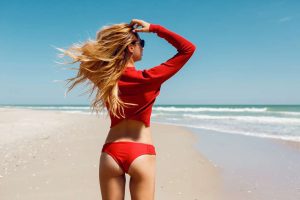- This topic is empty.
-
AuthorPosts
-
30/06/2025 at 14:32 #82736
When it comes to enjoying water activities, whether it’s kayaking, paddleboarding, or beach volleyball, water shoes are an essential piece of gear. However, many enthusiasts encounter a common issue: blisters. These painful nuisances can turn a fun day into an uncomfortable experience. In this post, we will delve into effective strategies to avoid blisters while wearing water shoes, ensuring that your aquatic adventures remain enjoyable and pain-free.
Understanding Blisters: The Basics
Blisters form when friction occurs between the skin and a surface, leading to the accumulation of fluid beneath the outer layer of skin. In the context of water shoes, this friction can be exacerbated by moisture, which softens the skin and makes it more susceptible to damage. Understanding the mechanics of blister formation is the first step in preventing them.
Choosing the Right Water Shoes
1. Material Matters: Opt for water shoes made from breathable, quick-drying materials. Neoprene and mesh are excellent choices as they allow for airflow and reduce moisture retention. Avoid shoes with excessive seams or rough edges that can increase friction.
2. Proper Fit: Ensure that your water shoes fit snugly but not too tight. A well-fitted shoe should allow for some movement but should not slide around on your foot. Consider trying on shoes with the type of socks you plan to wear, as this can affect the fit.
3. Arch Support and Cushioning: Look for water shoes that provide adequate arch support and cushioning. This can help distribute pressure evenly across your foot, reducing the likelihood of friction points that lead to blisters.
Pre-Activity Preparation
1. Foot Care Routine: Before heading out, ensure your feet are clean and dry. Apply a blister prevention product, such as blister pads or a specialized anti-friction balm, to areas prone to blisters. These products create a protective barrier that reduces friction.
2. Socks or No Socks?: The debate over whether to wear socks with water shoes is ongoing. If you choose to wear socks, opt for moisture-wicking materials that will keep your feet dry. If you prefer going sockless, ensure your shoes are designed for this purpose and have smooth interiors to minimize friction.
During Activity: Staying Vigilant
1. Take Breaks: If you’re engaging in prolonged activities, take regular breaks to allow your feet to breathe. This can help reduce moisture buildup and give your skin a chance to recover from any friction.
2. Adjust Your Shoes: Periodically check the fit of your water shoes during your activity. If you notice any discomfort or shifting, take a moment to readjust them. A small adjustment can prevent significant issues later on.
3. Monitor Your Feet: Pay attention to any signs of irritation or discomfort. If you feel a hot spot developing, take immediate action by applying a blister pad or adjusting your shoes to alleviate pressure.
Post-Activity Care
1. Clean and Dry: After your water activities, thoroughly clean and dry your feet. This helps prevent any potential infections from developing in the event of minor abrasions.
2. Moisturize: Apply a good foot moisturizer to keep your skin hydrated and supple. Well-moisturized skin is less likely to crack and develop blisters.
3. Inspect Your Shoes: Regularly check your water shoes for signs of wear and tear. Replace them if you notice any areas that could cause friction or discomfort.
Conclusion
Preventing blisters while wearing water shoes is achievable with the right knowledge and preparation. By selecting the appropriate footwear, implementing a solid foot care routine, and staying vigilant during activities, you can significantly reduce the risk of blisters. Remember, a little attention to detail can go a long way in ensuring that your water adventures are not only enjoyable but also comfortable. Happy splashing!
-
AuthorPosts
- You must be logged in to reply to this topic.


